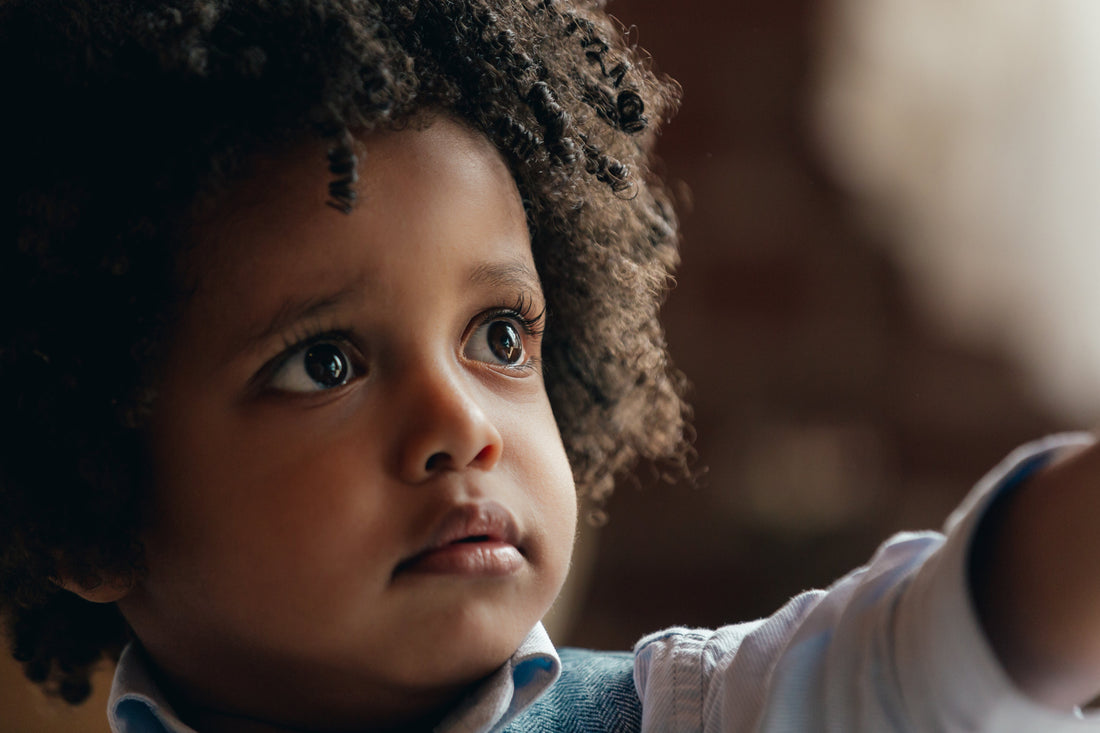
Why Keeping Toys "Out of Reach" Can Boost Language Development
As a seasoned speech-language pathologist, one of the most important steps to setting up my therapy room to have an effective session is placing toys out of reach. Now I’m not talking about withholding toys from your child but instead setting up the environment at the beginning to create valuable opportunities for communication, interaction, and language learning.
4 Ways “Out of Reach” Promotes Language Development:
1. Encourages Communication Attempts
When a child sees a toy they want but can’t quite reach, they’re naturally motivated to communicate. This might be through gestures, pointing, making sounds, or using words. Instead of simply grabbing what they want, they need to initiate an interaction in order to gain assistance. This could include looking at you expectantly, reaching, signing “help,” or attempting words like “ball” or “open.”
By setting up situations where children need to communicate, we create natural opportunities for them to practice using language in meaningful ways.
2. Promotes Joint Attention & Social Interaction
Keeping toys visible but out of reach encourages children to seek out a communication partner. They learn how to involve others in their play by making eye contact, using facial expressions, and engaging in turn-taking interactions—key building blocks of social communication.
This strategy fosters joint attention, which is shared focus with another person on an object or activity. Joint attention is crucial for language development, as it strengthens a child’s engagement in back-and-forth exchanges, a skill foundational to both social and academic success.
3. Expands Vocabulary & Sentence Building
When a child need to request toys or assistance, caregivers have a golden opportunity to model and expand language. Instead of just handing over a toy, you can model phrases like:
-
“Do you want the red car or the blue car?”
-
“I pick red ball!”
-
“Help me.”
With items out of reach, a caregiver can provide repeated exposure to vocabulary and syntax, which helps the child remember and understand these concepts.
4. Develops Problem-Solving & Turn-Taking Skills
Beyond language, this strategy also teaches problem-solving. When a toy isn’t immediately available, a child learns to navigate challenges—whether by asking for help, pointing, or attempting new words.
Additionally, if siblings or peers are involved, this becomes a natural opportunity to practice turn-taking. One child might say, “My turn,” while another waits and requests their turn next. These social skills are essential for later success in group play, school settings, and beyond.
How to Implement This Strategy at Home
-
Place favorite toys in clear bins or high shelves so your child can see them but need assistance to access them.
-
Keep snacks in containers or cabinets so your child can request the snack by name or ask for help.
-
Place pieces of a toy behind your back so the child has multiple opportunities to use the same word/sign/gesture and the caregiver has multiple opportunities to model.
-
Model and expand their communication when they are communicating to teach your child what language to use in order to access the item or help. Give the item to your child immediately to encourage a positive experience.
Final Thoughts
Keeping toys just slightly out of reach fosters communication. It encourages children to interact, problem-solve, and expand their language skills in natural, motivating ways.
So next time you’re tempted to leave all the toys out in the living room, consider making a small adjustment. You might be surprised at the big impact on your child’s communication skills!
References
American Academy of Pediatrics. (2018). The power of play: A pediatric role in enhancing development in young children. Pediatrics, 142(3), e20182058. https://doi.org/10.1542/peds.2018-2058
National Association for the Education of Young Children. (2022). The power of playful learning in early childhood: Education that is fun and engaging fosters academic and social development. https://www.naeyc.org/resources/pubs/yc/summer2022/power-playful-learning
Written By: Kayla O'Connor, M.S., CCC-SLP